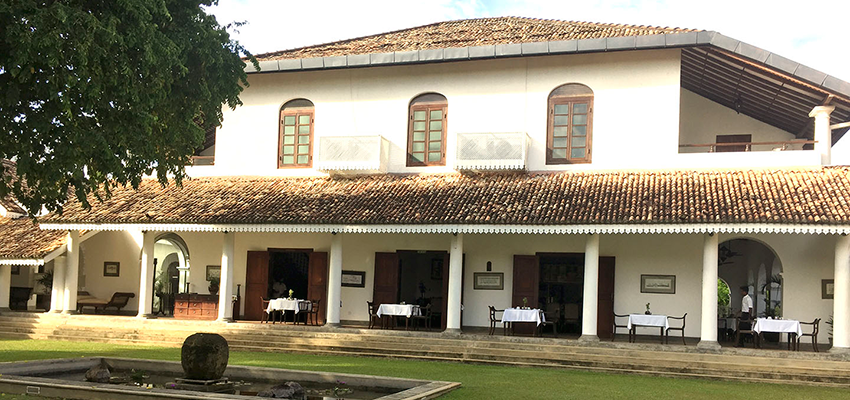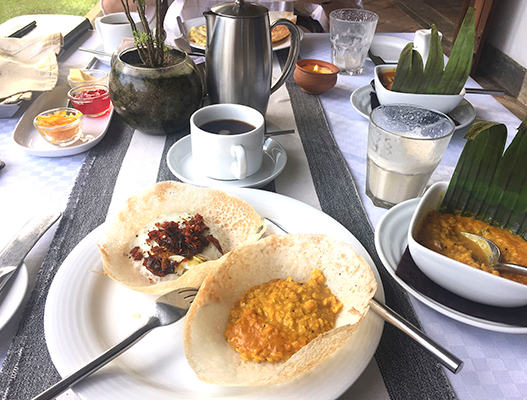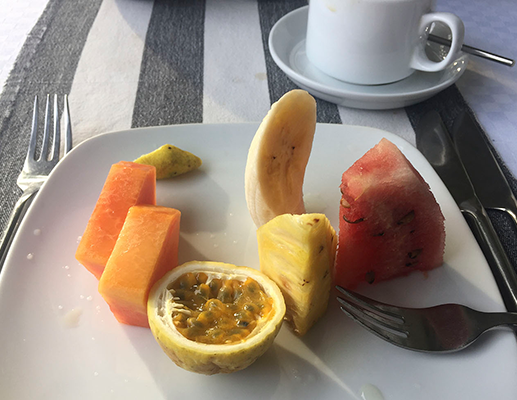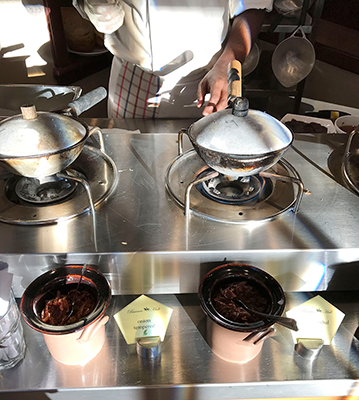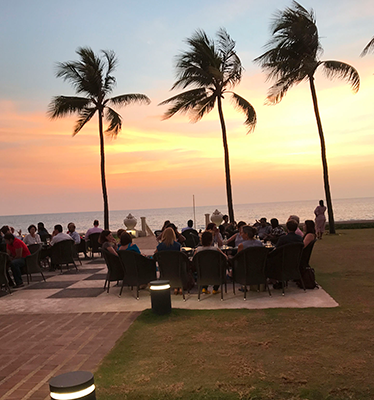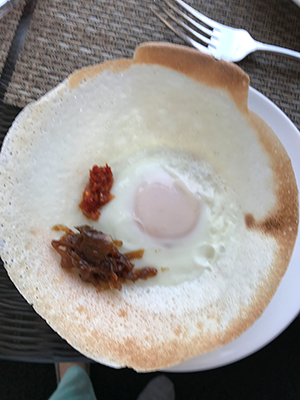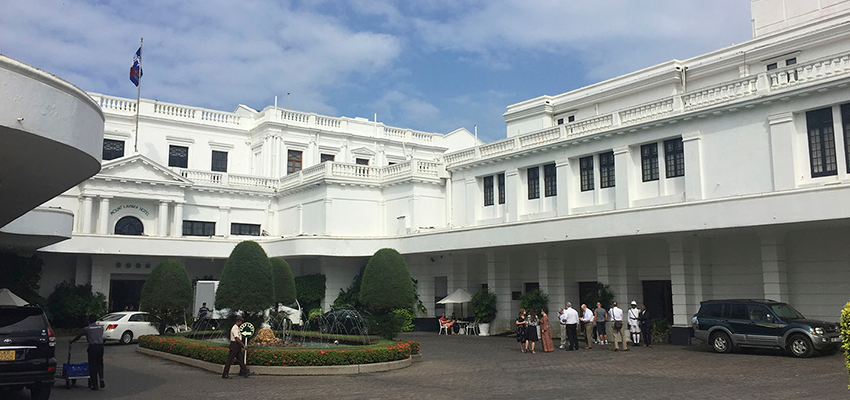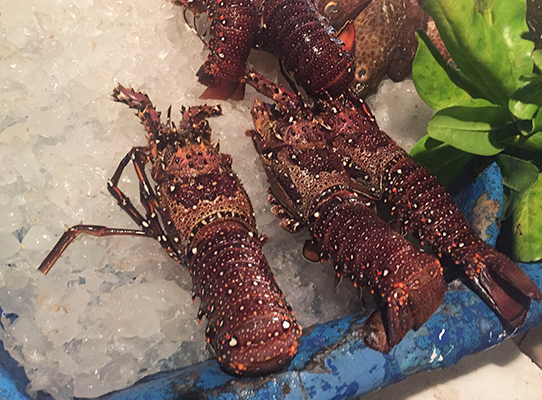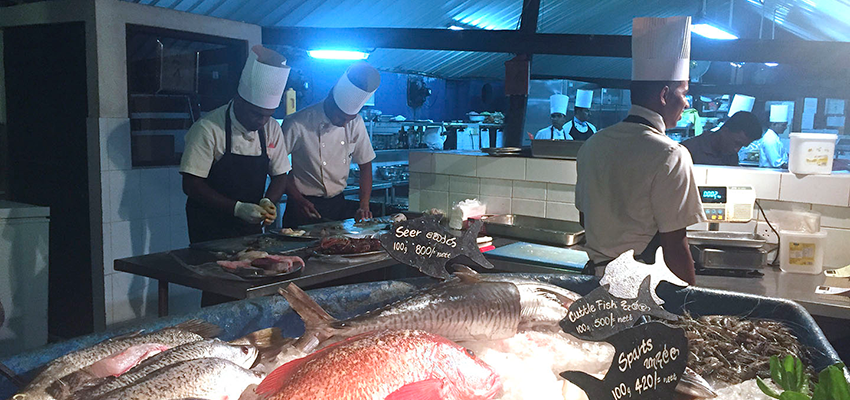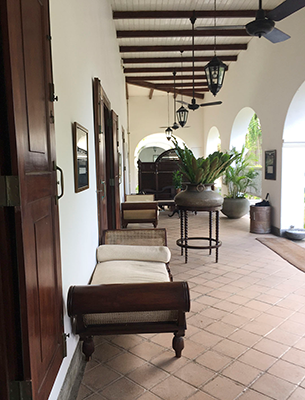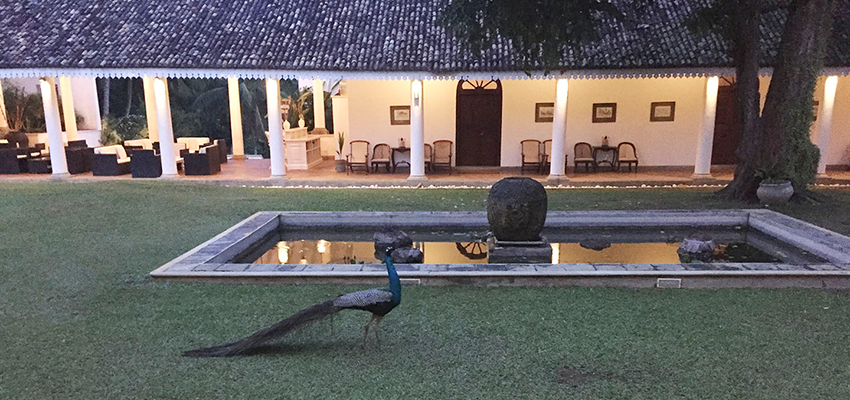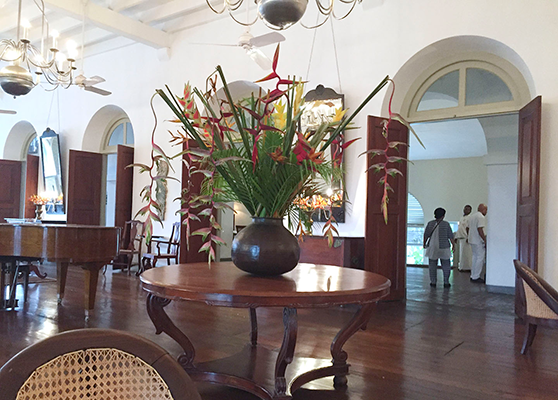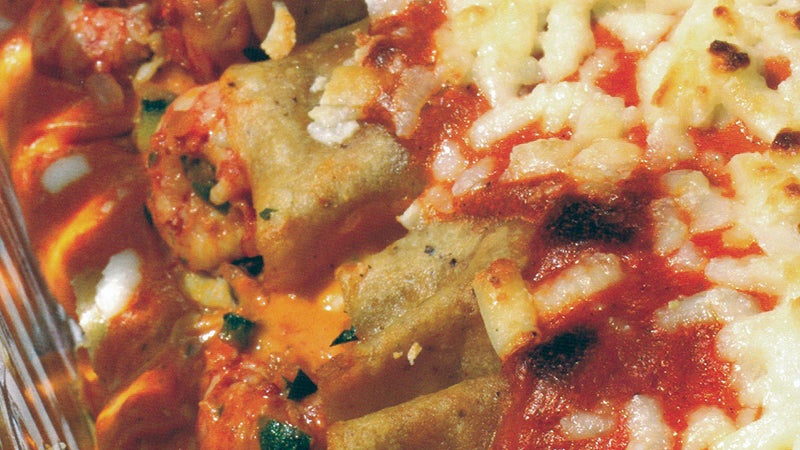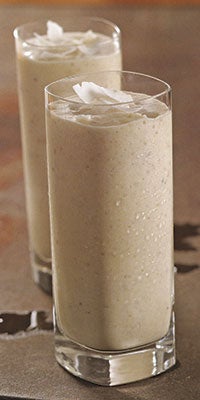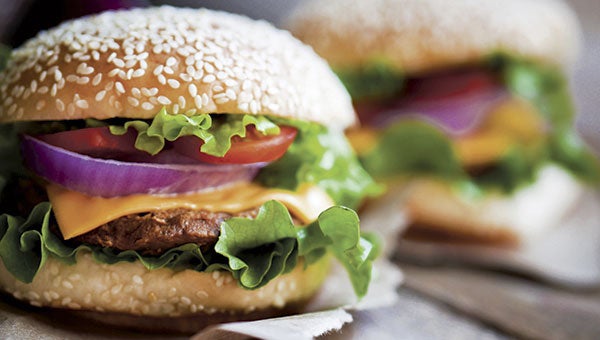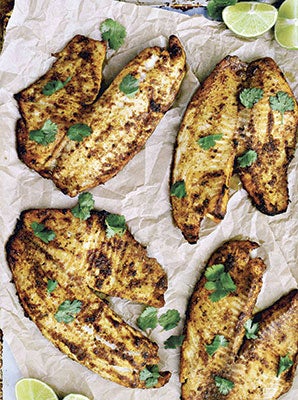Touring grand British hotels of Sri Lanka [with gallery]
Published 2:26 am Saturday, March 17, 2018
We finally made our trip to Sri Lanka. It was two years in coming, since two years ago my husband fell off a ladder and we had to cancel.
Why Sri Lanka? Well, we like to go to a warm place in the winter (even though it turned out to be a warm week here) and my husband was interested in the grand hotels built during the British time there, so our stay was planned around them. We bought a book, Asia’s Grand Hotels, at a yard sale in New Orleans last fall and used it to plan our trip.
We flew Emirates to Colombo, and since we had a 9-hour layover booked a hotel and spent a few hours in Dubai. I lived in Dubai for four years and have been back since, but it was fun to see all the glimmer of Dubai at night. So much building going on, and Dubai does try to be the center of the universe! I preferred the old days myself when camels were seen in the streets on my way to school. Anyway, early in the morning we left from Dubai airport for Colombo and had our first curry for breakfast. How does curry and red wine go together? Not well, but it was the beginning of our days of eating curry three times a day.
Arriving in Colombo was easy, since we had gotten our visa early on and there was no problem with immigration. Our trip had been planned around train travel around the island but we could never secure a first class ticket and being in third class might mean standing for hours. So upon arrival we decided to do a ‘car and driver’ which was the smart thing to do and not that expensive.
Our first grand hotel was the Galle Face in Colombo, established in 1864, the oldest of all Asia’s grand hotels (It seems the date depends on what you mean by first.). It faces Galle Face Green on the Indian Ocean, although the green is so used it is mostly brown, the grass having been worn down. Here we began the custom on arriving of being invited to have a seat while drinks are served. They take your passports and complete the check in. We later enjoyed cocktails on the veranda overlooking the iconic checkerboard tiles on the main lawn and the ocean. We later had dinner there as the sun set over the ocean. Breakfast was our introduction to hoppers.
The next day we met our driver and began a lot of driving in a never ending traffic jam. We spent most of the day winding our way into the cooler hills, up past Kandy and on to Nuwara Eliya at about 6,000 feet and 20° cooler to the Grand Hotel, established 1826 as the Governor General’s summer residence. Here we were welcomed with hot tea. All our rooms were huge and here one really felt a part of the past. More curries and hoppers were to be had for our dinning pleasure.
We traveled the next day down the winding road past innumerable tea plantations back to Colombo. Ceylon is famous for its tea and is the world’s fourth largest producer. We bought some cashews from a roadside vendor as these are another crop produced in Sri Lanka. We also bought several boxes of tea, Dilmah, a prevalent brand recommended to us.
That night we spent at Mt. Lavinia, established 1806, built by Sir Thomas Maitland, a Lt. General with the East India Company, becoming governor in 1805. He built this beachside mansion for his lover, a mixed race dancer of notable beauty who had captured his heart. The hotel, though grand, was a little faded. But cocktails and dinner were had on the beach at a table set in the sand and lit by candles and flares after the sun set over the ocean. Here we enjoyed a notable lobster dish. One went to the fish bar and picked out the fresh fish or seafood that the chef would prepare as you wished. I thought this was our best meal. Breakfast was again a big buffet with everything. We had hoppers again and my husband repeated his curry and rice as well.
The next day we drove south along the beach to Galle. Along the way we visited a ‘homemade’ tsunami museum. On December 26, 2004, a tsunami struck in Asia, killing about 300,000 people. Indonesia lost 220,000 and Sri Lanka, 50,000. Near the site of the museum 1200 people were taken when the tsunami carried off a commuter train. People died as far away as the east coast of Africa.
Galle, near the southern tip of Sri Lanka, is believed by many historians to be the Tarshish of Biblical times, from which King Solomon obtained gems, spices and peacocks. Marco Polo claimed to have stopped there in 1299. The Portuguese landed in 1505. The Dutch captured Galle in 1640. The British took control in 1802. Independence was granted in 1948. Our hotel here, Tamarind Hill, was built by Don Johannes Amarasiri, a Sri Lankan aristocrat in the Dutch period over 250 years ago. It was later the official residence of the British Admiral of the Peninsula and Orient Steam Navigation Company (the famed P&O Line). Here on a hill overlooking the Ocean we were welcomed with an appropriate drink, tamarind iced tea. Here we also enjoyed one cocktail hour on our private veranda overlooking the courtyard and the ocean during an afternoon thunder storm. We watched the monkeys scurrying in the trees and enjoyed the rain from a safe dry location. The old hotel had several leaks. It seems the monkeys are tearing up the roof tiles. I was glad I didn’t have to worry about repairing it. Breakfast on the dinning veranda was more hoppers while we watched the peacocks strutting.
To and from Galle we stopped at two gardens owned separately by the Bawa brothers. Geoffrey Bawa, an internationally renowned architect had his home at Lanuganga near Bentota and not far away was his elder brother, Bevis’ garden named Brief (He was a lawyer.) These men were flamboyant denizens of the end of the British era and the new republic and their gardens and homes reflected this.
One new food experience for us was a Sri Lankan egg hopper. Hoppers are considered a staple of Sri Lankan cuisine and can come in many forms. It is much like a savory crepe with a soft boiled egg in the middle. It is served with caramelized onions, toasted coconut meat and Sri Lankan spices, sambal, and you can eat it like a taco (which we did not know at the time). I really liked them and learned to eat a runny egg inside the hopper. The recipe below is simple but needs a proper hopper pan to make it correctly. I have purchased one and it is in the mail. You can find one on amazon.com.
Sri Lankan Egg Hoppers
2 cups rice flour
½ cup granulated sugar
1 ½ cups coconut milk
¾ cup water
1 tablespoon dry active yeast
1 ½ teaspoon warm water
1 teaspoon sugar
¾ cup cooked basmati rice
1 ½ cups coconut milk
Fresh eggs
Combine the first four ingredients (flour, sugar, coconut milk and water) in a large mixing bowl and set aside. In a separate container, proof the yeast in the warm-water sugar mixture until it triples in volume, about 10 minutes.
Blend the rice and remaining coconut milk in a blender at high speed to form a thick paste. Combine the yeast mixture and contents from the blender with the other ingredients. Using a whisk, stir until no lumps of flour remain. Place in an oven with the pilot light on for about three hours. The mixture should double in size.
Heat hopper pan over medium-high heat. Swirl batter in the pan and crack an egg in the middle. Cover and let cook for 2 or 3 minutes. Loosen hopper with a knife and serve.
Don’t forget the caramelized onions and some sambal.
Violence erupted shortly after we left between Buddhists and Muslims (70% of Sri Lankans are Buddhist, 10% Muslim, 13% Hindu, 7% Christian) and a curfew was established in the Kandy area. And fortunately the winter storms hitting the northeast of the US held off until we got home, the first time in our last four trips that we came back home on our scheduled flight.
with hot tea. All our rooms were huge and here one really felt a part of the past. More curries and hoppers were to be had for our dinning pleasure.
We traveled the next day down the winding road past innumerable tea plantations back to Colombo. Ceylon is famous for its tea and is the world’s fourth largest producer. We bought some cashews from a roadside vendor as these are another crop produced in Sri Lanka. We also bought several boxes of tea, Dilmah, a prevalent brand recommended to us.
That night we spent at Mt. Lavinia, established 1806, built by Sir Thomas Maitland, a Lt. General with the East India Company, becoming governor in 1805. He built this beachside mansion for his lover, a mixed race dancer of notable beauty who had captured his heart. The hotel, though grand, was a little faded. But cocktails and dinner were had on the beach at a table set in the sand and lit by candles and flares after the sun set over the ocean. Here we enjoyed a notable lobster dish. One went to the fish bar and picked out the fresh fish or seafood that the chef would prepare as you wished. I thought this was our best meal. Breakfast was again a big buffet with everything. We had hoppers again and my husband repeated his curry and rice as well.
The next day we drove south along the beach to Galle. Along the way we visited a ‘homemade’ tsunami museum. On December 26, 2004, a tsunami struck in Asia, killing about 300,000 people. Indonesia lost 220,000 and Sri Lanka, 50,000. Near the site of the museum 1200 people were taken when the tsunami carried off a commuter train. People died as far away as the east coast of Africa.
Galle, near the southern tip of Sri Lanka, is believed by many historians to be the Tarshish of Biblical times, from which King Solomon obtained gems, spices and peacocks. Marco Polo claimed to have stopped there in 1299. The Portuguese landed in 1505. The Dutch captured Galle in 1640. The British took control in 1802. Independence was granted in 1948. Our hotel here, Tamarind Hill, was built by Don Johannes Amarasiri, a Sri Lankan aristocrat in the Dutch period over 250 years ago. It was later the official residence of the British Admiral of the Peninsula and Orient Steam Navigation Company (the famed P&O Line). Here on a hill overlooking the Ocean we were welcomed with an appropriate drink, tamarind iced tea. Here we also enjoyed one cocktail hour on our private veranda overlooking the courtyard and the ocean during an afternoon thunder storm. We watched the monkeys scurrying in the trees and enjoyed the rain from a safe dry location. The old hotel had several leaks. It seems the monkeys are tearing up the roof tiles. I was glad I didn’t have to worry about repairing it. Breakfast on the dinning veranda was more hoppers while we watched the peacocks strutting.
To and from Galle we stopped at two gardens owned separately by the Bawa brothers. Geoffrey Bawa, an internationally renowned architect had his home at Lanuganga near Bentota and not far away was his elder brother, Bevis’ garden named Brief (He was a lawyer.) These men were flamboyant denizens of the end of the British era and the new republic and their gardens and homes reflected this.
One new food experience for us was a Sri Lankan egg hopper. Hoppers are considered a staple of Sri Lankan cuisine and can come in many forms. It is much like a savory crepe with a soft boiled egg in the middle. It is served with caramelized onions, toasted coconut meat and Sri Lankan spices, sambal, and you can eat it like a taco (which we did not know at the time). I really liked them and learned to eat a runny egg inside the hopper. The recipe below is simple but needs a proper hopper pan to make it correctly. I have purchased one and it is in the mail. You can find one on amazon.com.
Sri Lankan Egg Hoppers
2 cups rice flour
½ cup granulated sugar
1 ½ cups coconut milk
¾ cup water
1 tablespoon dry active yeast
1 ½ teaspoon warm water
1 teaspoon sugar
¾ cup cooked basmati rice
1 ½ cups coconut milk
Fresh eggs
Combine the first four ingredients (flour, sugar, coconut milk and water) in a large mixing bowl and set aside. In a separate container, proof the yeast in the warm-water sugar mixture until it triples in volume, about 10 minutes.
Blend the rice and remaining coconut milk in a blender at high speed to form a thick paste. Combine the yeast mixture and contents from the blender with the other ingredients. Using a whisk, stir until no lumps of flour remain. Place in an oven with the pilot light on for about three hours. The mixture should double in size.
Heat hopper pan over medium-high heat. Swirl batter in the pan and crack an egg in the middle. Cover and let cook for 2 or 3 minutes. Loosen hopper with a knife and serve.
Don’t forget the caramelized onions and some sambal.
Violence erupted shortly after we left between Buddhists and Muslims (70% of Sri Lankans are Buddhist, 10% Muslim, 13% Hindu, 7% Christian) and a curfew was established in the Kandy area. And fortunately the winter storms hitting the northeast of the US held off until we got home, the first time in our last four trips that we came back home on our scheduled flight.


